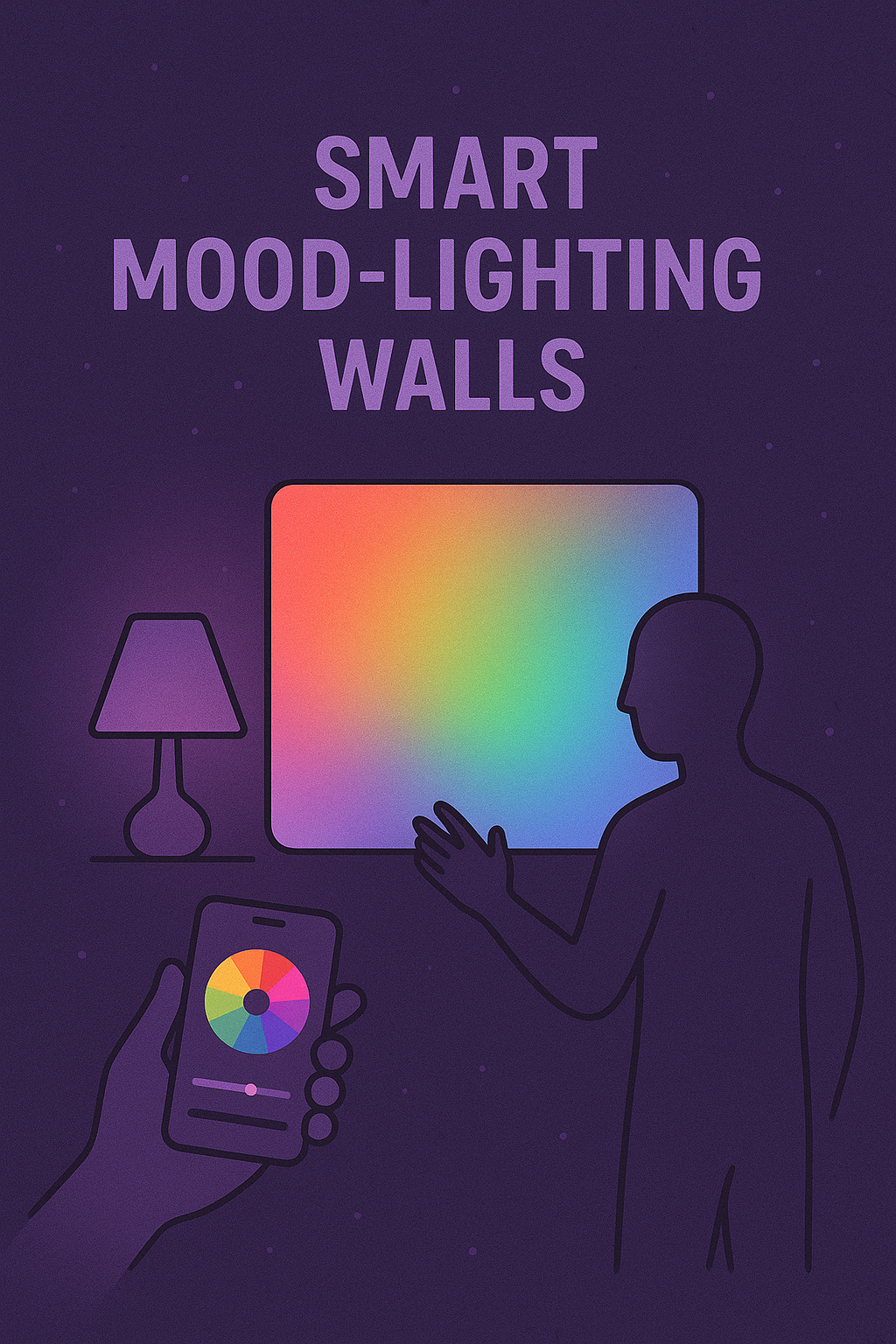Mental Health Met averse
The Mental Health Met averse is a virtual ecosystem dedicated to emotional well-being, therapy, and psychological growth, built upon immersive technologies such as VR/AR, AI, and blockchain. It merges clinical psychology, neuroscience, and digital interaction design to create a safe, personalised, and interactive virtual world where users can heal, learn, and grow mentally and emotionally. Unlike standard teletherapy or mindfulness apps, the Mental Health Metaverse goes beyond the screen — users can embody avatars, visit therapeutic spaces, participate in social-emotional experiences, and interact with AI or human therapists in fully immersive environments that adapt to their mental and emotional state.
Foundational Philosophy
The idea stems from several modern approaches to mental health:
- Biopsychosocial model: Mental health as an interplay of biology, psychology, and environment.
- Embodied cognition: The mind and body are interconnected; immersive physical experiences can transform psychological states.
- Digital empathy: Technology can simulate emotional presence, support, and empathy when designed with psychological intelligence.
- Self-sovereign healing: People can explore and improve their well-being without depending entirely on centralized clinical structures.
The Mental Health Metaverse envisions a global mental wellness ecosystem — part digital sanctuary, part learning environment, part social support network.
Core Components
Immersive Therapeutic Worlds
These are virtual spaces designed with psychological intent — for relaxation, reflection, and healing.
Examples include:
- A tranquil forest with dynamic soundscapes for stress relief.
- A floating island where users visualize and confront their anxiety.
- A “memory garden” for grief therapy, where users can plant virtual memories of loved ones.
Each world uses environmental psychology and neuroaesthetic principles to influence emotion and cognition through color, light, and sound.
AI and Emotion-Aware Avatars
AI companions and virtual therapists can sense user emotions via voice tone, facial expressions, and physiological data (if wearable devices are connected).
They respond em pathetically, offering exercises, conversation, or grounding techniques.
Some avatars might represent therapeutic archetypes — like “The Guide,” “The Listener,” or “The Mirror” — to align with different therapy styles (CBT, DEBT, ACT, etc.).
Human–Therapist Integration
Licensed mental health professionals can conduct VR-based therapy sessions inside private metaverse clinics.
The therapist and client can meet as avatars, ensuring anonymity, comfort, and reduced social anxiety, while maintaining therapeutic presence and body language cues.
Group Support Environments
The metaverse hosts virtual support groups for anxiety, PTSD, depression, addiction, grief, and trauma recovery.
These groups can gather in safe, moderated virtual spaces designed to encourage openness and empathy, with AI moderation ensuring safety and inclusivity.
Mindfulness and Emotional Skills Training Interactive modules help users practice mindfulness, emotional regulation, self-compassion, and resilience.
For example:
- VR breathing exercises synchronized with visuals.
- Gamified cognitive behavioral therapy (CBT) tasks.
- Guided meditations that adapt to user’s biometric feedback.
Technical Architecture
The Mental Health Metaverse combines XR (Extended Reality), AI, blockchain, and cloud technologies.
Front-End Layer
- VR headsets, AR glasses, or mobile devices
- 3D environments built using Unity or Unreal Engine
- Haptic interfaces for sensory feedback (touch, vibration, heartbeat simulation)
AI and Emotion Layer
- Emotion recognition through voice, facial expression, and text
- NLP for dialogue understanding and empathy modeling
- Recommendation engines for personalized therapeutic experiences
- Psychological profiling models (built with informed consent)
Blockchain and Privacy Layer
- Decentralized storage for personal data and therapy records
- Self-sovereign identity for private access to mental health services
- Tokenized incentives (for positive mental health actions, community participation, etc.)
- Smart contracts for therapist licensing, payments, and data consent
Clinical Integration Layer
- APIs linking with mental health databases, EHR systems, and wearable health devices
- Secure teletherapy backends using HIPAA/GDPR-compliant encryption
- Virtual diagnostic tools (e.g., cognitive assessments through VR tasks)
User Journey Example
1. Entry and Assessment
A user enters the metaverse through their avatar. The system conducts a mood assessment via a short conversation and optional biometric scan (heart rate, tone).
2. Personalized World Generation
Based on mood and mental state, the AI creates a custom environment — calming beach for stress, bright open sky for depressive states, or social lounge for loneliness.
3. Guided Interaction
The user interacts with an AI companion who uses therapeutic dialogue to explore feelings and teach coping strategies.
4. Therapy Session
If the user opts for a licensed therapist, they can teleport to a private virtual office where the therapist joins as an avatar. Therapy proceeds as in a real session, but enhanced with immersive exercises.
5. Reflection and Growth
Progress is recorded in the user’s encrypted “Wellness Ledger” (a blockchain-based record of achievements, insights, and self-care streaks).
6. Social Connection
The user can join optional group events — mindfulness circles, community art therapy, or collaborative journaling spaces.
Unique Features
- Adaptive Mental Environments: The world dynamically responds to user emotion — if anxiety rises, visuals and sounds shift toward calm tones.
- Therapeutic AI Guilds: Specialized AI agents (e.g., “The Mentor,” “The Soother”) trained on psychology and empathy data.
- Virtual Reality Exposure Therapy (VRET): Controlled simulations to treat phobias, PTSD, and social anxiety.
- Biofeedback Integration: Heart rate, EEG, or skin conductance sensors provide real-time physiological data that adjust therapy flow.
- Gamified Healing: Users earn wellness tokens or symbolic badges for consistent self-care, journaling, or therapy attendance.
- Art and Music Therapy Realms: Spaces for creating or experiencing generative art and music tuned to emotional states.
- Digital Twin Psychology: Users can visualize internal conflicts as avatars or characters and engage in “dialogue therapy” with their own psyche.
Core Technologies
| Domain | Tools & Frameworks |
|---|---|
| VR/AR/XR | Unity3D, Unreal Engine, WebXR, Oculus SDK, SteamVR |
| AI/NLP | GPT-based LLMs, Emotion Transformers, Affectiva, Empathic Dialogue Systems |
| Blockchain | Polygon, Hyperledger, or Avalanche for identity and data consent |
| Cloud Infrastructure | AWS HealthLake, Azure Health Cloud, IPFS for decentralized storage |
| Wearable Integration | Apple HealthKit, Fitbit SDK, NeuroSky, Muse EEG |
| Data Privacy | Homomorphic encryption, zero-knowledge proofs for sensitive data |
Psychological Frameworks
- Cognitive Behavioral Therapy (CBT) – gamified cognitive restructuring
- Acceptance and Commitment Therapy (ACT) – immersive mindfulness and acceptance training
- Dialectical Behavior Therapy (DBT) – VR-based emotional regulation simulations
- Positive Psychology – gratitude gardens, strengths quests, and flow-inducing games
- Exposure Therapy – safe, controlled re-creations of triggering environments
Economic and Governance Model
The metaverse may operate as a DAO (Decentralized Autonomous Organization) governed by therapists, researchers, and users.
- Therapist NFTs: Verified therapist licenses stored as NFTs to confirm authenticity.
- Wellness Tokens: Rewards for participation, consistency, and peer support.
- Marketplace for Wellbeing: Therapists, coaches, and creators offer experiences, meditation worlds, or self-care tools.
- Research Grants via DAO: Funding distributed transparently for digital mental health innovation.
Ethics, Safety, and Regulation
The system must balance innovation with ethics:
- Informed Consent: Users must understand data collection and AI use.
- Clinical Oversight: AI companions must not diagnose or treat beyond approved guidelines.
- Privacy Protection: Data encryption and anonymization are mandatory.
- Emotional Safety: Crisis protocols connect users to real-world help during distress.
- Cultural Sensitivity: Environments and therapies respect diverse traditions and values.




Post Comment